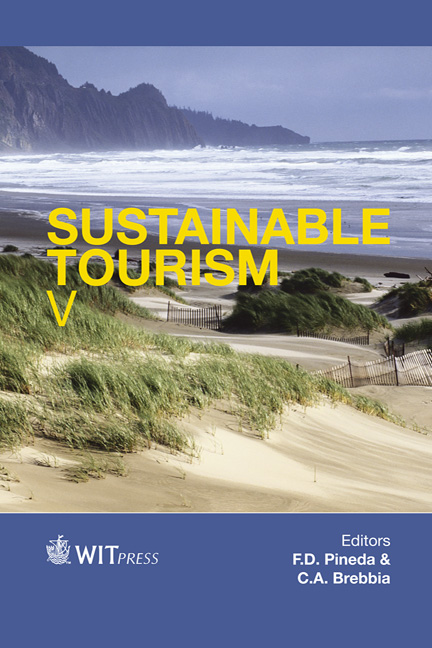How Do Tourists Look At Sintra’s World Heritage?
Price
Free (open access)
Transaction
Volume
161
Pages
12
Page Range
369 - 380
Published
2012
Size
3,372 kb
Paper DOI
10.2495/ST120301
Copyright
WIT Press
Author(s)
H. Roque, M. Henriques & H. Mouriño
Abstract
In December 1995, Sintra was included on the World Heritage List under the name of \“The Cultural Landscape of Sintra”. This classification is related with the pioneering role played by Sintra in the 19th century in establishing the European Romantic architecture. The UNESCO World Heritage Site designation has substantially increased visitors flow to Sintra. For instance, in August 2010 about 240,000 persons visited the Palaces and Parks of Sintra. One of the main challenges that local policy-makers are faced with is how to effectively deal with the main impacts of the Sintra’s World Heritage status, especially in what concerns to mass tourism. It urges policy-makers to implement sustainable tourism. Hence, it becomes crucial to fully understand what tourists think about Sintra’s World Heritage. To this purpose, in August and September 2010, a survey was conducted to the tourists that visited the Palaces and Parks of Sintra. We found out that tourists are eager to visit Sintra mainly because of its Classification as a World Heritage site. The majority of the tourists consider that the state of preservation of the Palaces and Parks is \“Good” or \“Very good”. Nevertheless, the renovation and conservation of the urban area in the historic centre are required. For the majority of tourists, Sintra is a place for a one-day visit. Hence, it is important to develop a more effective marketing strategy to attract visitors to Sintra for more than just one day. Keywords: Sintra, world heritage site, survey study, Kruskal-Wallis test. 1 Introduction Situated in the district of Lisbon, the old town of Sintra and its natural surroundings composed of hundreds of trees and exotic flowers within unique
Keywords
Sintra, world heritage site, survey study, Kruskal-Wallis test.





